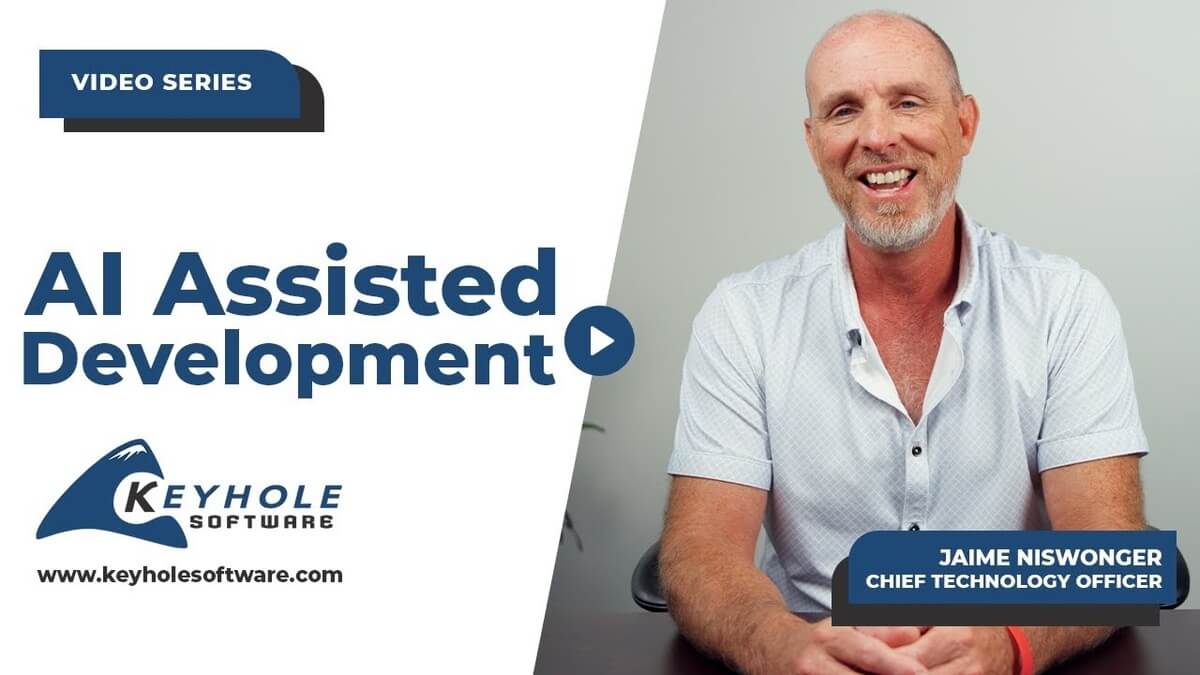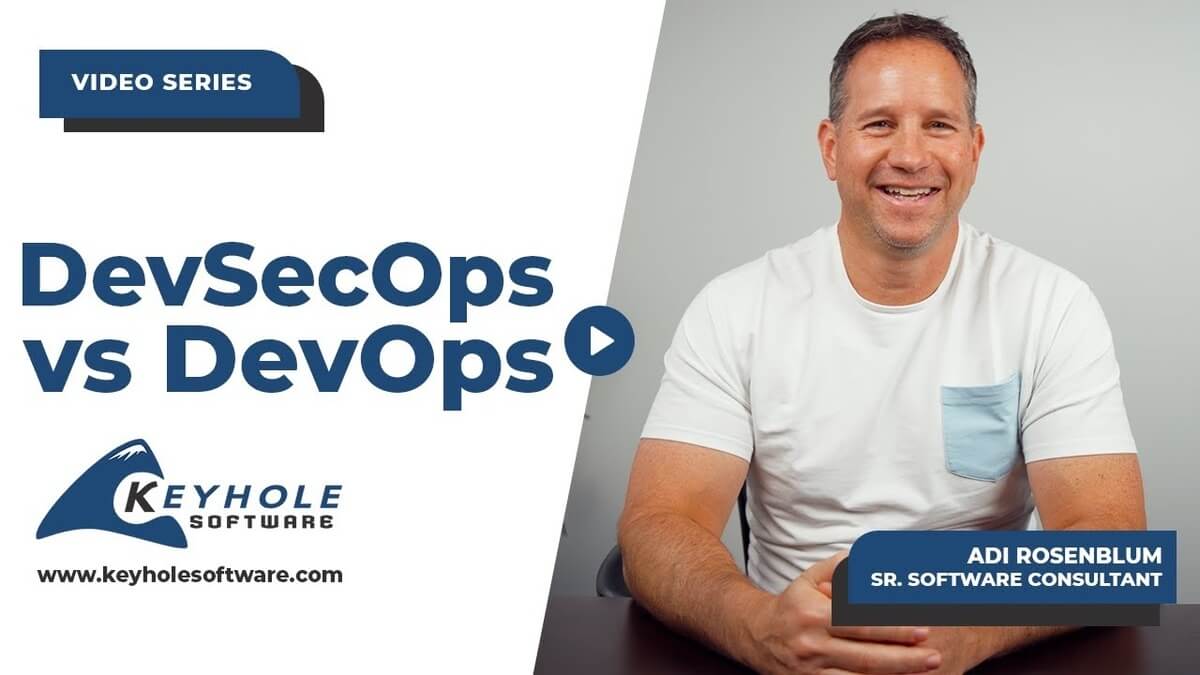What are the Common Software Security Issues & How Do I Prevent Them?
January 15, 2024
In the world of software development, addressing the common software security issues and how you can prevent them is crucial. At Keyhole, we understand the importance of prioritizing security right from the project’s inception.
This approach is not just a recommendation but a necessity in today’s digital landscape. Integrating security measures from the start significantly reduces the risk of encountering vulnerabilities later, setting a strong foundation for a secure software development lifecycle.
The Keyhole Approach: Swiss Cheese Strategy
A key strategy we advocate for is the ‘Swiss Cheese Approach.’ This involves setting up multiple layers of security defenses—much like the layers in a sliced Swiss cheese block—each covering different vulnerabilities throughout the development lifecycle.
It’s a diverse strategy that acknowledges no single defense is foolproof. Each layer of security (cheese) serves as a defense mechanism, and these defenses are intentionally diverse affecting a broad range of vulnerabilities. This diversity ensures that if one layer has a vulnerability (hole), other layers can still provide protection.
Think of it as a collaborative and adaptable strategy, where each layer communicates and works together to create a robust defense against a variety of security threats. By having multiple layers, we create a continuous improvement cycle, adapting to evolving threats. Slices can include:
- Application Security Layer: Conducting secure coding practices, performing regular code reviews, and implementing security testing (e.g., static analysis, dynamic analysis) to identify and fix vulnerabilities in the application code.
- Data Security Layer: Encrypting sensitive data at rest and in transit, implementing strong access controls, and ensuring secure storage and retrieval of data to protect against unauthorized access.
- Identity and Access Management Layer: Implementing robust authentication mechanisms, multi-factor authentication, and strict access controls to manage user identities and prevent unauthorized access.
- Endpoint Security Layer: Deploying antivirus software, endpoint detection and response solutions, and ensuring secure configurations on devices to protect against malware and unauthorized access.
- Cloud Security Layer: Implementing security measures specific to cloud environments, such as secure configurations, encryption, and identity management, to protect data and applications hosted in the cloud.
These examples illustrate how each layer addresses different aspects of security, forming a comprehensive defense strategy when combined in the Swiss Cheese Approach. Others layers could include network security, physical security, incidence response and monitoring, regulatory compliance, and many others.
The goal of this approach is that by the time the software is ready for production, it has passed through an extensive series of tests and checks, significantly mitigating the risk of security breaches. This approach ensures end-to-end security throughout the development lifecycle, making it harder for attackers to succeed.
Staying Ahead of the Curve
In the ever-changing landscape of technology, one of the most critical aspects is staying up-to-date with security trends. Recognizing that you’ll always be playing catch-up in this cat-and-mouse game is essential. Collaborating with software developers who are not only skilled but also keenly aware of the latest security trends and vulnerabilities is crucial. This knowledge is a vital asset in safeguarding your software against new and emerging threats.
Zero-Trust Architecture
The concept of zero-trust architecture is increasingly relevant, especially with the shift to cloud-based solutions and remote workers. In a zero-trust model, you remain skeptical—no entity, whether inside or outside the network, is inherently trusted.
Here are some key components of a Zero-Trust Architecture:
- Least Privilege Access: Users and devices only get access to the resources they need for their specific tasks. No unnecessary permissions, no open doors.
- Continuous Verification: Trust is not a one-time thing. ZTA demands ongoing verification of identities, devices, and applications throughout their lifecycle.
- Micro-Segmentation: Instead of a one-size-fits-all approach, ZTA divides the network into smaller segments, limiting lateral movement in case of a breach.
- Multi-Factor Authentication (MFA): Passwords alone are so last season. ZTA insists on additional layers of authentication, adding extra armor to the security posture.
- Device Trustworthiness: ZTA questions every device’s credentials. Is it up-to-date on security patches? Does it meet the established security standards? If not, access is denied.
This approach requires a comprehensive understanding and implementation, often facilitated through expert consulting and educational resources. Embracing zero-trust principles significantly enhances the security posture of your software, particularly important in cloud environments where traditional security assumptions are obsolete.
Navigating Security Challenges in the Cloud
Transitioning to the cloud introduces a host of new security considerations. In cloud environments, the old paradigms of network security and data protection need reevaluation.
This shift necessitates robust strategies such as enhanced network security, secure storage and retrieval of sensitive data (secrets), and IP space partitioning to prevent unauthorized interactions between servers. Addressing these challenges from the early stages of development is key to building a resilient, cloud-ready application.
Architecting with Security in Mind
To effectively counter software security issues, it’s imperative to architect your solutions with security as a foundational element. This forward-thinking approach, coupled with a deep understanding of zero-trust architecture and a commitment to keeping pace with security trends, will prepare you for success in the dynamic world of software development.
Moreover, it’s about creating a culture within your team where security is a shared responsibility and an integral part of the development process, not just a checkbox to be ticked.
Keyhole’s Commitment: Knowledge Sharing and Client-Focused Delivery
Our firm is built on a culture of knowledge sharing and client-focused delivery. We believe in empowering our clients with the tools and knowledge necessary to navigate the complex landscape of software security. Our team, steeped in modern technology solutions, is committed to guiding you through the intricacies of secure software development, from inception to deployment and beyond.
Security Learning Resources From Keyhole Software
As knowledge transfer is a core tenet of of our software development team, we have a number of resources for you to consider for further learning:
- Recent white paper: Security Best Practices in Application Development
- Video: Top AppDev Security Mistakes And How to Avoid Them – 45-minute video, recorded at a Keyhole public education event
- Article: Top Security Mistakes to Avoid in AppDev
- All security-related articles
Conclusion
In closing, addressing common software security issues requires a strategic, integrated approach, starting from the initial stages of development. By implementing layered defenses, staying informed about the latest security trends, understanding zero-trust architecture, and adapting to the unique challenges of cloud environments, you can build robust, secure software systems.
If you’re looking for a partner to help navigate these complexities, contact us. We’re here to share our passion, expertise, and commitment to modern technology solutions, ensuring your software is not only functional but also secure.
More From Zach Gardner
About Keyhole Software
Expert team of software developer consultants solving complex software challenges for U.S. clients.




It was informative when you talked about how a strategic approach is needed to address common software security issues. I would think that it would be important for a software company to track things that could potentially become a hazard. Working with a hazard mitigation service seems like the smart thing to do if you want to protect your company.